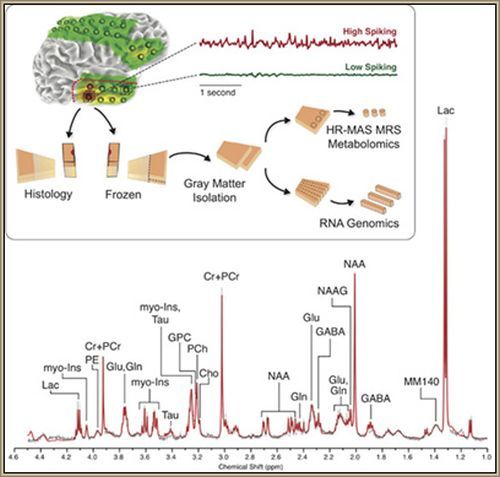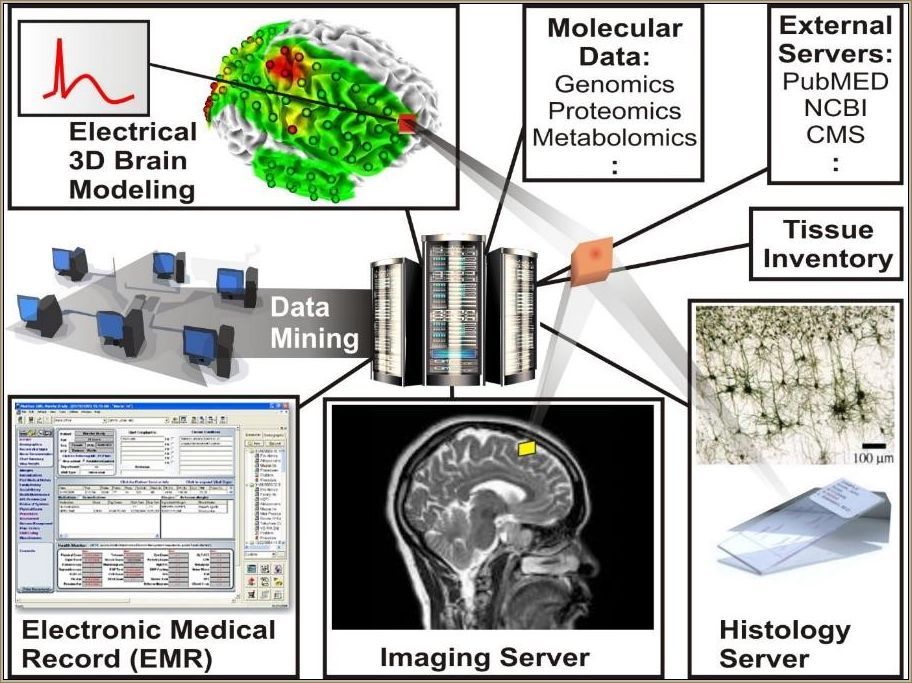Article
Noninvasive Biomarkers for Epilepsy: A New Way Forward
Author(s):
Thanks to technology, it may be possible to diagnose epilepsy in patients earlier and via noninvasive means.
Figure 1. Collecting and analyzing data

Figure 2. Overview of data connectivity plans for the University of Illinois NeuroRepository.

BRIEF COMMUNICATION
Dr. Loeb is John S. Garvin Professor and Head of the Department of Neurology and Rehabilitation, University of Illinois College of Medicine, Chicago, IL.
Thanks to technology, it may be possible to diagnose epilepsy in patients earlier and via noninvasive means. Using high-resolution magic angle spinning proton magnetic resonance spectroscopy (MRS) along with metabolomic-genomic-histological analyses of electrically mapped human cortical regions, cDNA microarrays, and histological analysis, our research team found an altered metabolomic-genomic signature.1
Study details
We leveraged a systems biology approach to ascertain this potential noninvasive biomarker profile (see slideshow). Using an 11.7 Tesla magnetic resonance spectroscopy machine, our study was the first to use MRI technology to investigate multiple metabolites in epileptic versus nonepileptic brain tissues.
Figure 1 shows how we identified human brain regions with more and less epileptic spiking and subdivided each piece of tissue for both histological and molecular analysis; it also shows a sample high resolution MRS of metabolites from these tissues.
Our team found evidence of a chronically altered metabolic state in epileptic brain regions. Specifically, tissues with high levels of epileptic electrical activity were also low in lactate. This reduced level of lactate in brain regions with the highest spiking was surprising, as it was contrary to what one would have guessed given that seizures can lead to induced lactate systemically.
This forced us to think about what is different about the metabolic state in these areas. Analysis also indicated these tissues had higher levels of creatine, phosphocreatine, and choline.
When combined with our genomic and histological data from these same samples, the biomarker profile was not only highly specific for epileptic brain tissues, but also revealed an abnormal metabolic and vascular state that could underlie the epileptic condition.
Implications and further research
We were very excited to learn that areas of the brain that spike a lot have a unique and reproducible metabolomic signature. Within this signature, by combining our metabolomic results with genomics from each piece of tissue we studied, we discovered an unusual alteration in the vascular and metabolic state of epileptic brain areas.
If this approach proves to be successful in future studies, MRI methods for the specific combination of metabolites we discovered could identify epileptic brain regions noninvasively. We currently have no way to “see” epileptic brain regions except using EEG electrodes.
Current imaging methods see brain lesions, but not the epileptic activities associated with these lesions. The problem is that noninvasive scalp EEG cannot detect epileptic waveforms unless they have already grown quite large, so invasive intracranial brain recording is the current gold standard for seeing these epileptic waveforms.
Although our sample was relatively small, having used samples from 9 patients, our research lays the groundwork for further research and holds great promise for the future in terms of earlier diagnosis. Current collaborative studies between the University of Illinois at Chicago and Wayne State in Detroit are working to fully translate this metabolomic signature into a truly noninvasive clinical method to detect and localize epileptic brain regions with high fidelity using MRI (Figure 2).
References:
1. Wu HC, Dachet F, Ghoddoussi F, et al. Altered metabolomics-genomic signature: a potential noninvasive biomarker of epilepsy. Epilepsia. July 17, 2017; Epub ahead of print.




